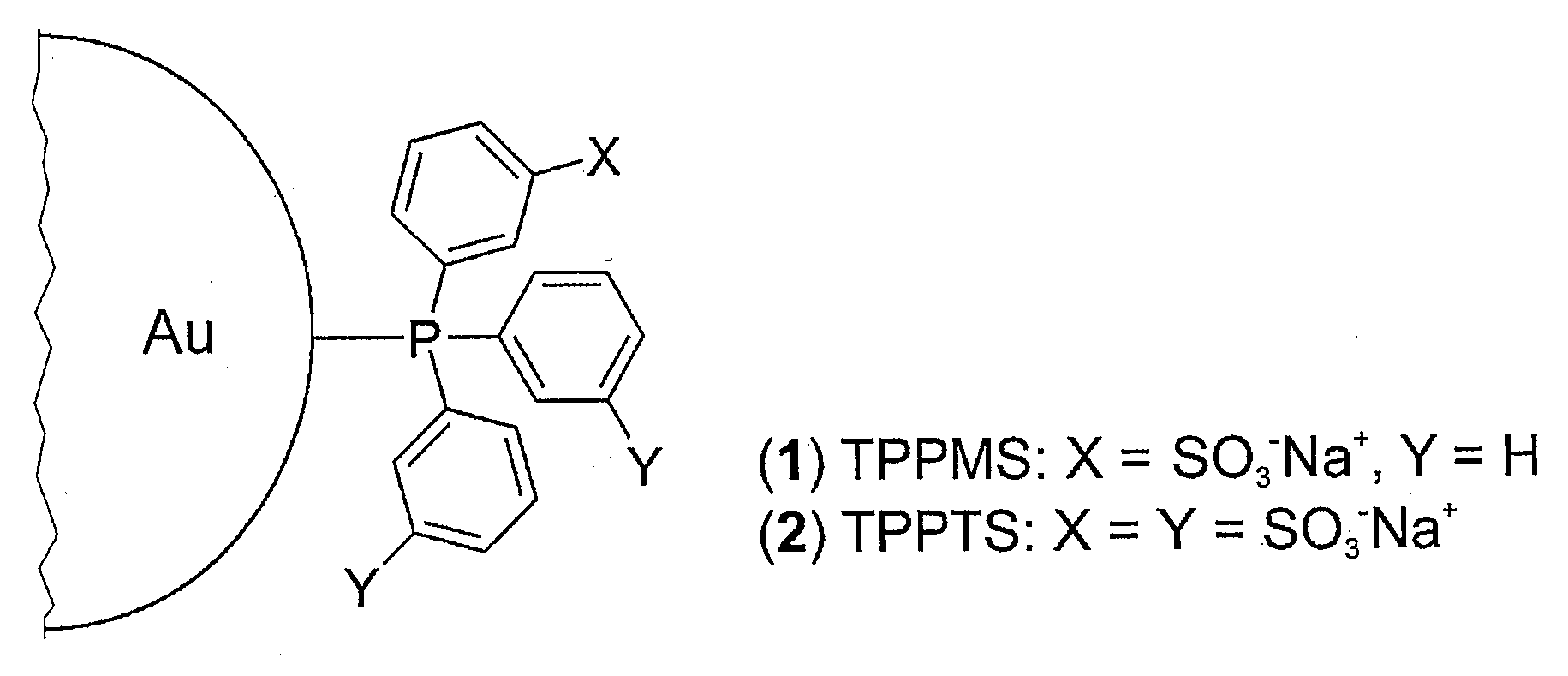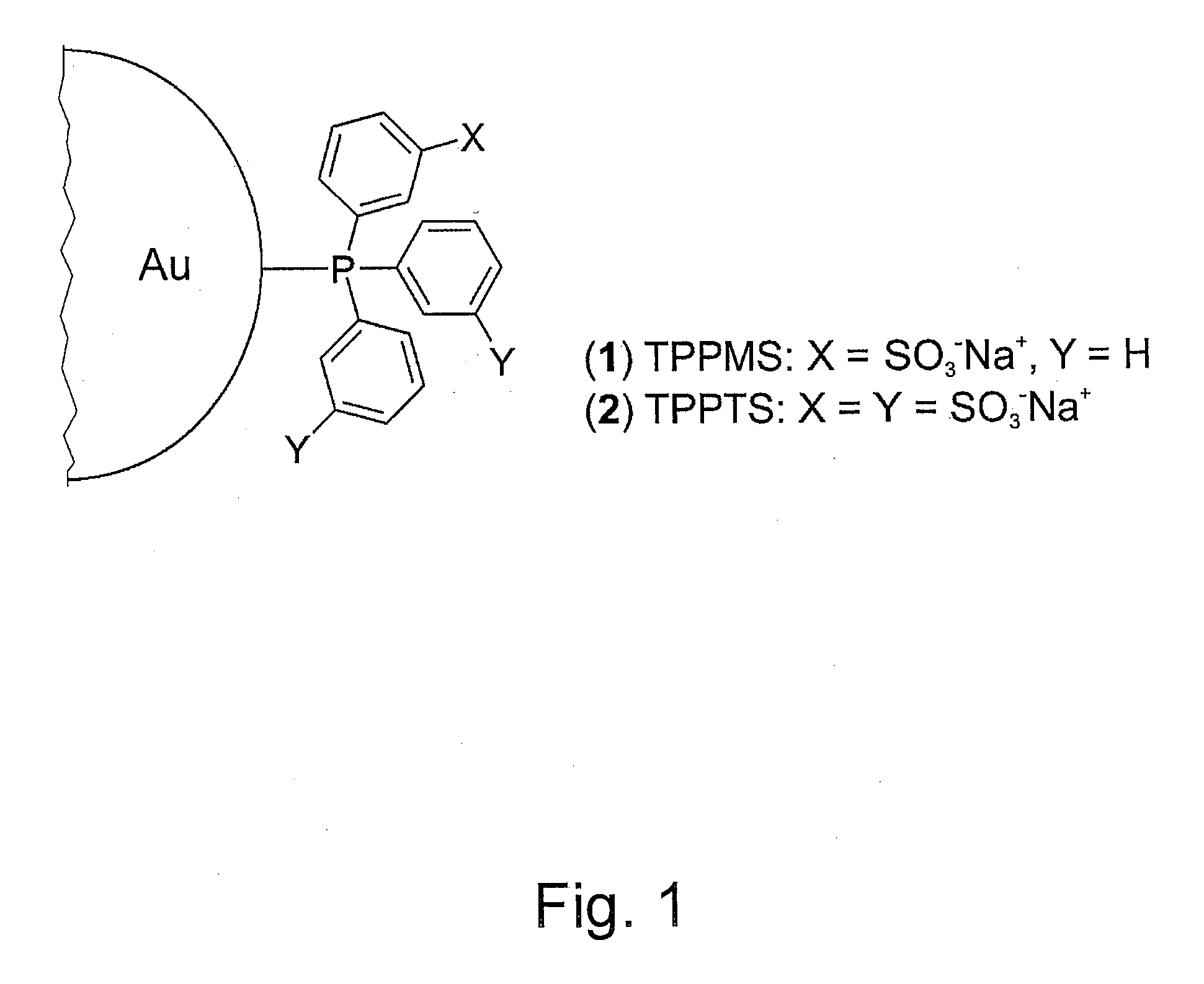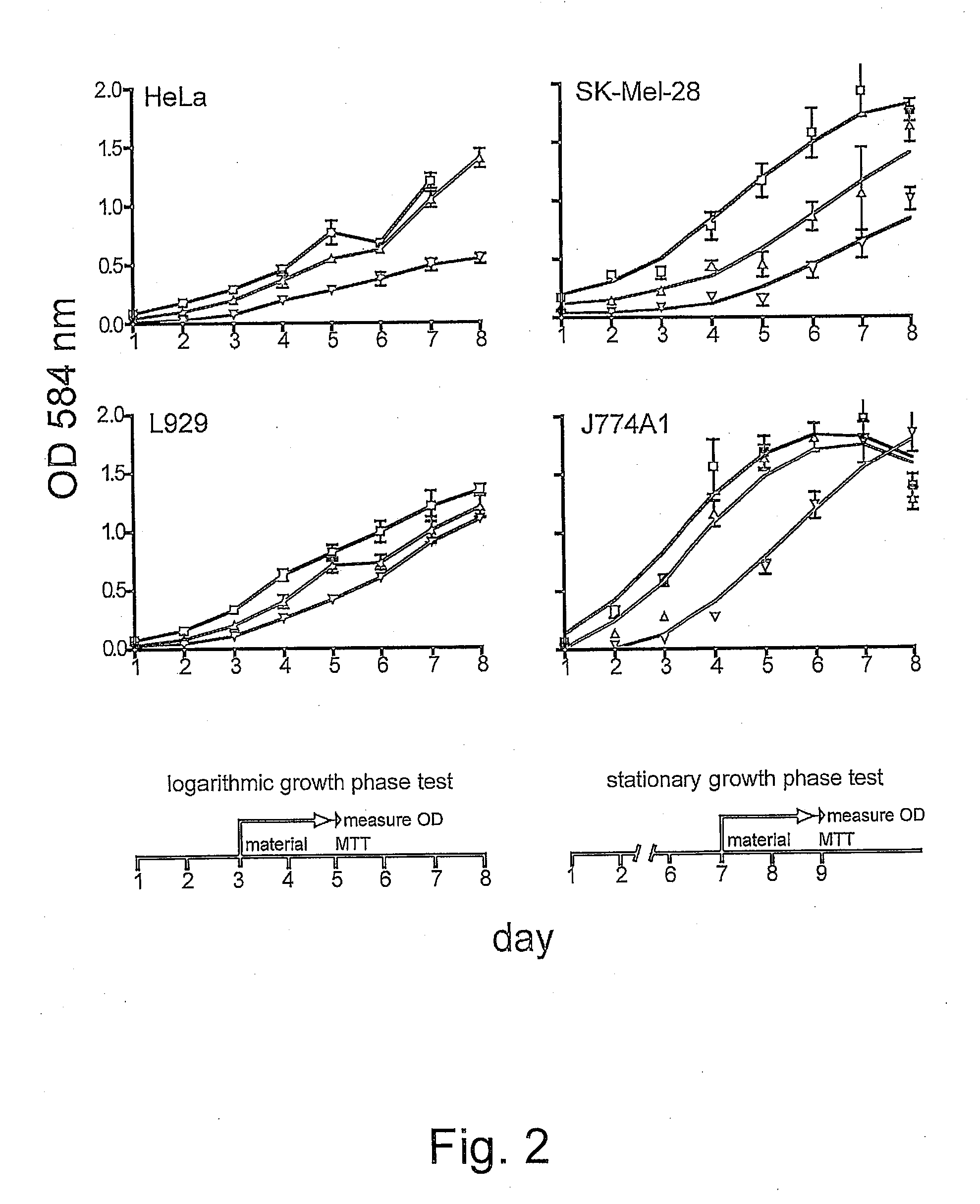Treatment of diseases with nanoparticles having a size-dependent cytotoxicity
a nanoparticle and cytotoxicity technology, applied in the field of medicine and pharmaceuticals, can solve the problems of phagocytosis and inflammation vicious circle, adverse tissue reaction, severe tissue damage,
- Summary
- Abstract
- Description
- Claims
- Application Information
AI Technical Summary
Problems solved by technology
Method used
Image
Examples
examples
1. Introduction
[0067]Gold nanoparticles are widely used in biomedical imaging and diagnostic tests. Based on their established use in the laboratory and the non-reactivity chemical stability of Au0, gold nanoparticles were expected to be safe. The recent literature, however, contains conflicting data regarding the cytotoxicity of gold nanoparticles. Against this background, applicant undertook a systematic study of triphenylphosphine-stabilized water-soluble gold nanoparticles stabilized by triphenylphosphine derivates ranging in size from 0.8 nm to 15 nm. Applicant tested the cytotoxicity of these particles in four cell lines representing major functional cell types with barrier and phagocyte function. Connective tissue fibroblasts, epithelial cells, macrophages and melanoma cells proved most sensitive to gold nanoclusters of 1.4 nm size resulting in IC50 values ranging from 40 to 200 μM. In contrast, gold particles of 15 nm size and Tauredon® (gold thiomalate) were non-toxic at up...
PUM
 Login to View More
Login to View More Abstract
Description
Claims
Application Information
 Login to View More
Login to View More - R&D
- Intellectual Property
- Life Sciences
- Materials
- Tech Scout
- Unparalleled Data Quality
- Higher Quality Content
- 60% Fewer Hallucinations
Browse by: Latest US Patents, China's latest patents, Technical Efficacy Thesaurus, Application Domain, Technology Topic, Popular Technical Reports.
© 2025 PatSnap. All rights reserved.Legal|Privacy policy|Modern Slavery Act Transparency Statement|Sitemap|About US| Contact US: help@patsnap.com



